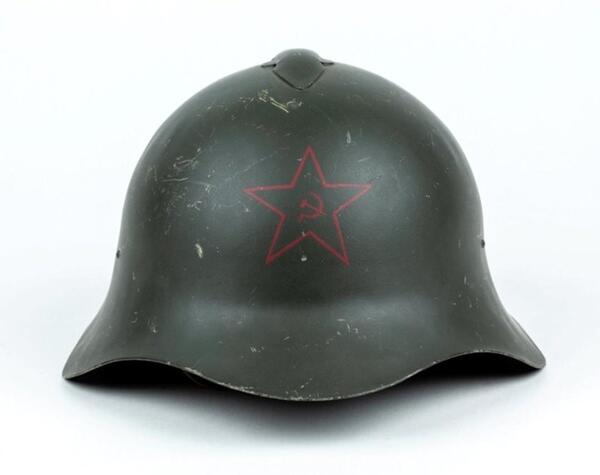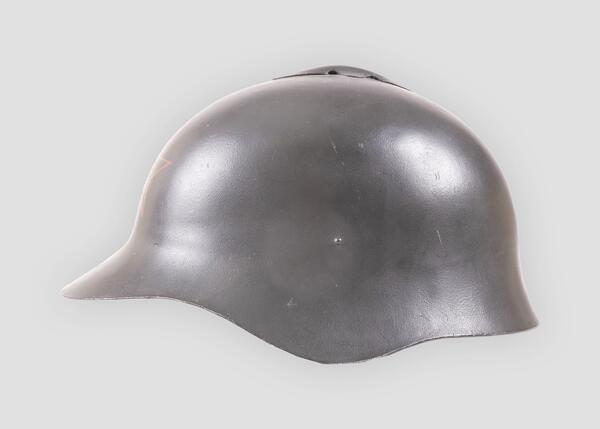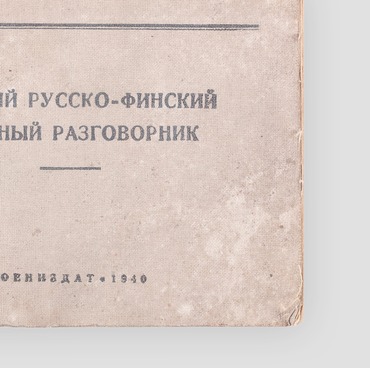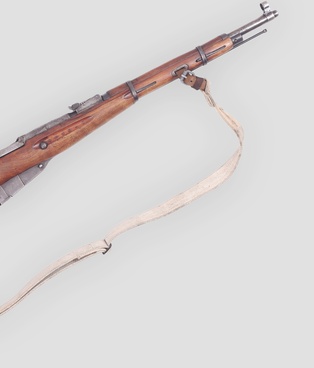The 1936 model SSh-36 steel helmet became the first mass-produced helmet of the Soviet Union. Prior to that, the Red Army used redesigned and modernized “Sohlberg” helmets. Production of the new helmet began in 1935 at the Lysva Metallurgical Plant, and in 1936 it entered service. The first batches of SSh-36 were ready in April 1936.
The new helmet had a hemispherical shape with a protruding front rim and slopy side flares. The helmet has an elongated front rim, long and angled side flares and a long straight backside. At the top of the helmet there is an oblong ridge-shaped comb which hides the ventilation system. The first version of the inner lining was a complex system of aluminum corrugated gaskets, a cardboard frame, a sponge gasket attached to the frame that, together with the corrugated plate was used for shock absorption; and four pieces of cloth forming the top of the inner lining. The helmet weighed slightly more than one kilo.
The helmet was first used in border conflicts in the Far East, in battles in the areas of Lake Hasan and the Khalkhin-Gol River. That is why the SSh-36 is often called “khasanka” or “khalkhingolka”. A small portion of the helmets were sent as aid to the Republicans during the Spanish Civil War.
Testing and use of the helmet revealed many shortcomings. Durability and protection proved unsatisfactory due to the thickness of the steel. Ventilation was ineffective: in summer the head was not ventilated, and in winter it froze. The Red Army soldiers complained of headaches, tired and sore necks. In the prone position, the back of the helmet rested against the collar of the tunic or overcoat, so it slid on the forehead and lowered the soldier’s field of view. In 1939, a new helmet was developed, the predecessor to the widely known SSh-40, and the SSh-36 was discontinued.
By the beginning of the Great Patriotic War, the SSh-36 was still in the supply of the Red Army, it could be seen on the Karelian Front up until 1944. The Soviet-Japanese War of 1945 was the last conflict where the helmet was widely used: detachments in the Far East did not conduct combat operations, did not suffer losses and were supplied on a residual basis, so they were given old helmets.
After the end of the war, old helmets were given to the civil defense system of the USSR.





